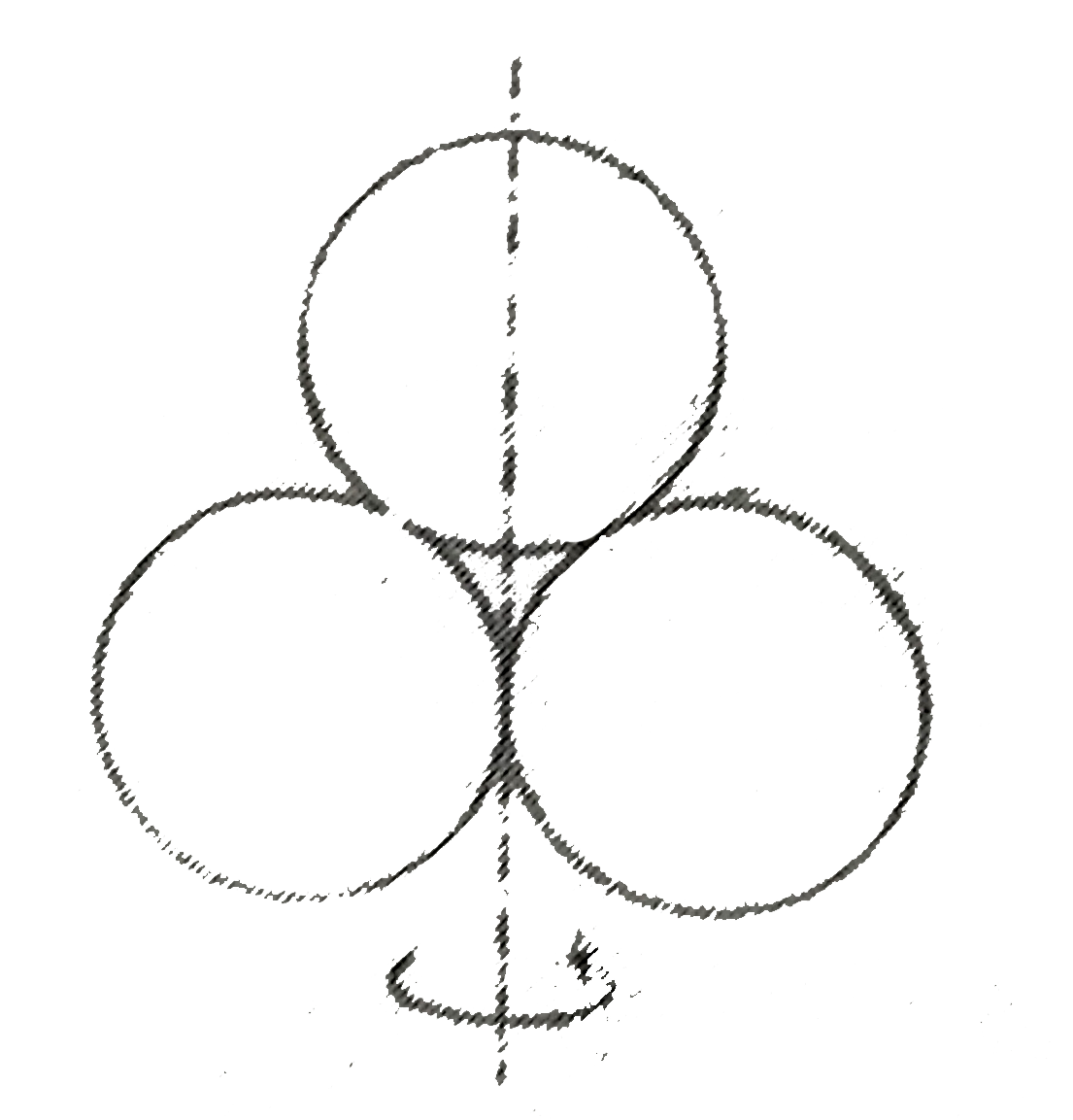Three identical metal balls each of radius r are placed touching each other on a horizontal surface such that an equilateral triangle is formed, when the center of three balls are joined. The center of mass of system is located at the
horizontal surface
centre of one of the balls
line joining the centres of any two balls
point of intersection of the medians
The correct Answer is:d
To find the center of mass of the system consisting of three identical metal balls placed in a triangular formation, we can follow these steps:
Step 1: Understand the Configuration
We have three identical metal balls, each with a radius r. When they touch each other, they form an equilateral triangle with the distance between the centers of any two balls equal to 2r.
Step 2: Identify the Centers of the Balls
Let’s denote the centers of the three balls as C1, C2, and C3. The coordinates of these centers can be assigned as follows:
- C1=(0,0)
- C2=(2r,0)
- C3=(r,r√3)
Step 3: Calculate the Center of Mass
The center of mass (xcm,ycm) of the system can be calculated using the formula:
xcm=x1+x2+x3n
ycm=y1+y2+y3n
where n is the number of balls (which is 3 in this case).
Substituting the coordinates:
xcm=0+2r+r3=3r3=r
ycm=0+0+r√33=r√33
Step 4: Conclusion
Thus, the center of mass of the system of three identical metal balls is located at:
(r,r√33)
We have three identical metal balls, each with a radius r. When they touch each other, they form an equilateral triangle with the distance between the centers of any two balls equal to 2r.
Let’s denote the centers of the three balls as C1, C2, and C3. The coordinates of these centers can be assigned as follows:
- C1=(0,0)
- C2=(2r,0)
- C3=(r,r√3)
The center of mass (xcm,ycm) of the system can be calculated using the formula:
xcm=x1+x2+x3n
ycm=y1+y2+y3n
where n is the number of balls (which is 3 in this case).
xcm=0+2r+r3=3r3=r
ycm=0+0+r√33=r√33
Thus, the center of mass of the system of three identical metal balls is located at:
(r,r√33)
Similar Questions
Three identical spheres each of radius .R. are placed on a horizontal surface touching one another. If one of the spheres is removed, the shift in the centre of mass of the system is
View SolutionThree identical spheres each of radius .R. are placed touching each other so that their centres A, B and C lie on a straight line. The position of their centre of mass from A is
View SolutionThree identical point objects each of mass m are placed at the vertices of an equilateral triange of side l. What is the gravitational potential at the centre of the equilateral triangle due to the point masses?
View SolutionThree identical cubes each of mass m are place on a smooth horizontal surface.A constant force F is applied on A as shown in the figure.The force on B applied by C is
View SolutionThree particles A(50g),B(100g) and C(150g) are placed at vertices of an equilateral triangle as shown in figure. Then the coordinates of center of mass of system is :
_2019_CBT8_E01_014_Q01.png)
View SolutionThree particles A(50g),B(100g) and C(150g) are placed at vertices of an equilateral triangle as shown in figure. Then the coordinates of center of mass of system is :
_2019_CBT8_E01_014_Q01.png)
View SolutionThree identical particles each of mass m are placed at the vertices of an equilateral triangle of side a. Fing the force exerted by this system on a particle P of mass m placed at the

(a) the mid point of a side
(b) centre of the triangle
View SolutionThree charges 2q,−q,and−q are located at the vertices of an equilateral triangle. At the center of the triangle,
View SolutionThree identical spheres each of radius a and mass m are placed such that their centers lie on the vertices of an equilateral triangle of side length 3a. The spheres are non conducting and each one carries a charge Q uniformly distributed over its surface. All the three spheres are simultaneously released and after releasing they move under the influence of their mutual electrostatic forces only. Based on this information, answer the following questions :
The total electrostatic potential energy stored in the system at the time of releasing is :
View SolutionThree rings each of mass m and radius r are so placed that they touch each other. The radius of gyration of the system about the axis as shown in the figure is

View Solution
